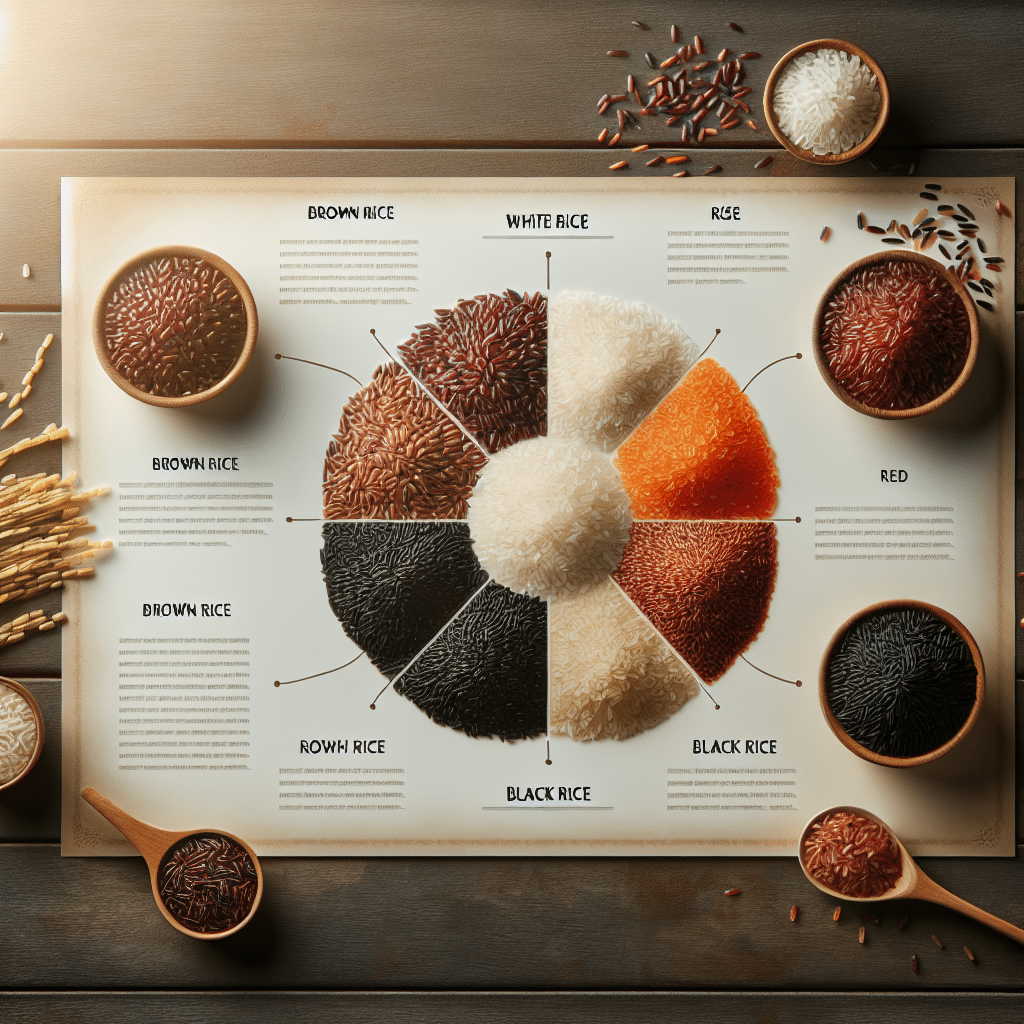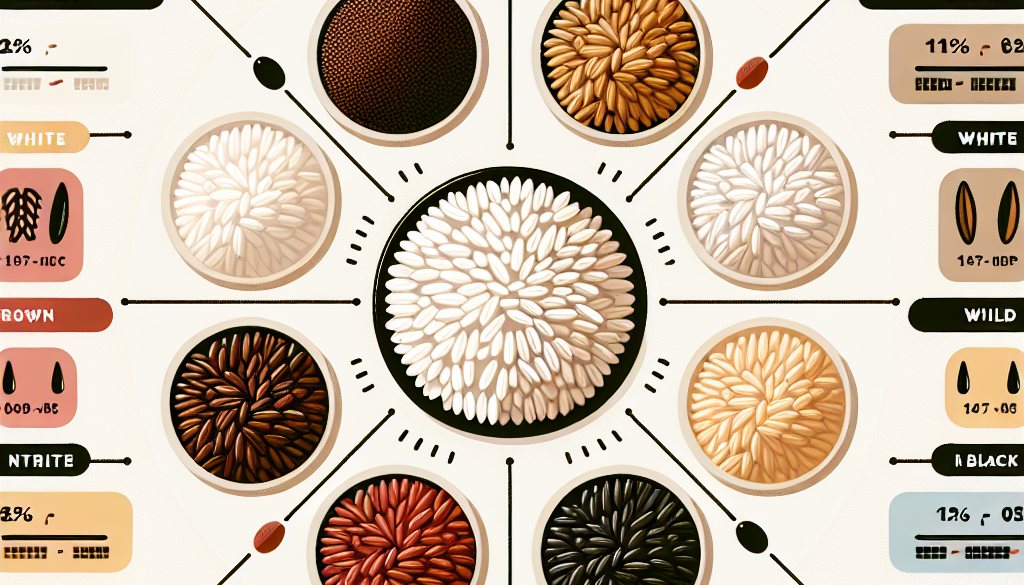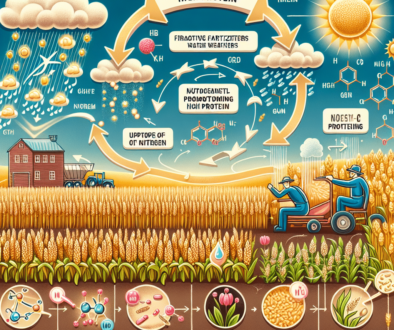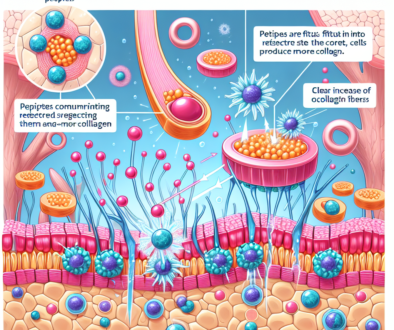Which Color Rice Is Healthiest?
-
Table of Contents
- Discovering the Healthiest Rice Color: A Comprehensive Guide
- Understanding the Spectrum of Rice Colors
- White Rice: The Refined Choice
- Brown Rice: The Whole Grain Alternative
- Red Rice: The Antioxidant Powerhouse
- Black Rice: The Ancient Superfood
- Comparing the Nutritional Profiles
- Health Benefits and Risks
- Which Color Rice Is Healthiest?
- Conclusion: Making the Right Choice for Your Health
- Enhance Your Diet with ETprotein’s High-Quality Protein Products
Discovering the Healthiest Rice Color: A Comprehensive Guide

Rice is a staple food for over half of the world’s population, and it comes in a variety of colors, each with its unique nutritional profile. In this article, we will delve into the health benefits of different rice colors and determine which one stands out as the healthiest choice for your diet.
Understanding the Spectrum of Rice Colors
Rice is not just a single entity; it is a collection of numerous varieties that differ in color, texture, and nutritional content. The most common rice colors include white, brown, red, and black (also known as purple rice). Each color signifies a different set of nutrients and health benefits.
White Rice: The Refined Choice
White rice is the most widely consumed type, especially in Asian countries. It is milled rice that has had its husk, bran, and germ removed, which results in a loss of fiber, vitamins, and minerals. While it is often enriched with iron and some B vitamins, it lacks the phytonutrients found in its whole-grain counterparts.
Brown Rice: The Whole Grain Alternative
Brown rice is a whole grain that retains its bran and germ, making it richer in fiber, vitamins, and minerals compared to white rice. It is a good source of magnesium, phosphorus, selenium, thiamine, niacin, and vitamin B6, and is high in fiber, which can help in digestion and reduce the risk of heart disease.
Red Rice: The Antioxidant Powerhouse
Red rice, with its distinctive color, owes its hue to an antioxidant called anthocyanin. This type of rice has similar nutritional benefits to brown rice but with the added bonus of these potent antioxidants, which are known to reduce inflammation and lower the risk of chronic diseases.
Black Rice: The Ancient Superfood
Black rice, also known as forbidden rice, was once reserved for Chinese royalty. It has the highest antioxidant activity among all rice varieties, thanks to its high anthocyanin content. It is also a good source of protein, fiber, and iron.
Comparing the Nutritional Profiles
To determine which color rice is healthiest, we need to compare their nutritional profiles. Here’s a breakdown of the key nutrients found in each type of rice per cooked cup:
- Fiber: Brown rice and black rice have the highest fiber content, which is crucial for digestive health.
- Protein: Black rice leads with the highest protein content, followed by brown and red rice.
- Antioxidants: Black and red rice are rich in anthocyanins, which have strong antioxidant properties.
- Vitamins and Minerals: Brown rice is a good source of vitamins and minerals, but black rice provides a more diverse range of nutrients due to its whole grain status.
While white rice is lower in nutrients due to the refining process, it is often considered easier to digest and is sometimes preferred for those with digestive issues.
Health Benefits and Risks
Each color of rice has its own set of health benefits and potential risks. Here’s an overview:
- Brown Rice: Its high fiber content can help with weight management and lower cholesterol levels. However, it may contain higher levels of arsenic than white rice.
- Red Rice: The antioxidants in red rice can help fight free radicals and may contribute to heart health. It also has a lower glycemic index than white rice.
- Black Rice: Its impressive antioxidant content can protect against heart disease, cancer, and other chronic conditions. Black rice also has anti-inflammatory properties.
- White Rice: It is often fortified with vitamins and minerals, but its high glycemic index can lead to spikes in blood sugar levels.
Which Color Rice Is Healthiest?
When it comes to determining the healthiest rice, black rice appears to be the superior choice due to its high levels of antioxidants, protein, and fiber. It provides a plethora of nutrients that can contribute to overall health and help prevent chronic diseases. Brown and red rice are also healthy options that offer significant benefits, particularly in terms of fiber content and antioxidant levels.
White rice, while not as nutrient-dense, can still be part of a healthy diet when consumed in moderation, especially if it is enriched with additional nutrients.
Conclusion: Making the Right Choice for Your Health
In conclusion, black rice stands out as the healthiest rice color due to its comprehensive nutritional profile and health benefits. However, the best choice for you may depend on your individual dietary needs, health goals, and personal preferences. Incorporating a variety of rice colors into your diet can ensure you receive a wide range of nutrients and health benefits.
Enhance Your Diet with ETprotein’s High-Quality Protein Products
If you’re looking to complement your healthy rice choices with high-quality protein products, consider ETprotein’s offerings. Their organic rice protein and other plant-based protein powders are an excellent addition to any diet, providing the essential amino acids your body needs for muscle growth, repair, and overall health.
ETprotein’s products are non-GMO, allergen-free, and boast a neutral taste, making them a versatile ingredient for shakes, smoothies, and other recipes. With a commitment to purity and quality, ETprotein is a trusted source for all your protein needs.
About ETprotein:
ETprotein, a reputable protein and L-(+)-Ergothioneine (EGT) Chinese factory manufacturer and supplier, is renowned for producing, stocking, exporting, and delivering the highest quality organic bulk vegan proteins and L-(+)-Ergothioneine. They include Organic rice protein, clear rice protein, pea protein, clear pea protein, watermelon seed protein, pumpkin seed protein, sunflower seed protein, mung bean protein, peanut protein, and L-(+)-Ergothioneine EGT Pharmaceutical grade, L-(+)-Ergothioneine EGT food grade, L-(+)-Ergothioneine EGT cosmetic grade, L-(+)-Ergothioneine EGT reference grade and L-(+)-Ergothioneine EGT standard. Their offerings, characterized by a neutral taste, non-GMO, allergen-free attributes, with L-(+)-Ergothioneine purity over 98%, 99%, cater to a diverse range of industries. They serve nutraceutical, pharmaceutical, cosmeceutical, veterinary, as well as food and beverage finished product distributors, traders, and manufacturers across Europe, USA, Canada, Australia, Thailand, Japan, Korea, Brazil, and Chile, among others.
ETprotein specialization includes exporting and delivering tailor-made protein powder and finished nutritional supplements. Their extensive product range covers sectors like Food and Beverage, Sports Nutrition, Weight Management, Dietary Supplements, Health and Wellness Products, and Infant Formula, ensuring comprehensive solutions to meet all your protein needs.
As a trusted company by leading global food and beverage brands and Fortune 500 companies, ETprotein reinforces China’s reputation in the global arena. For more information or to sample their products, please contact them and email sales(at)ETprotein.com today.












